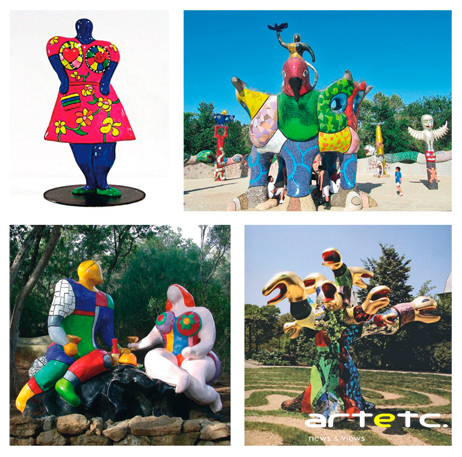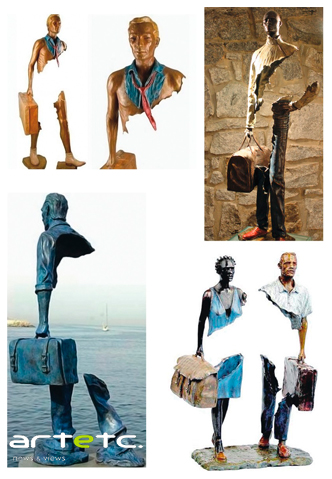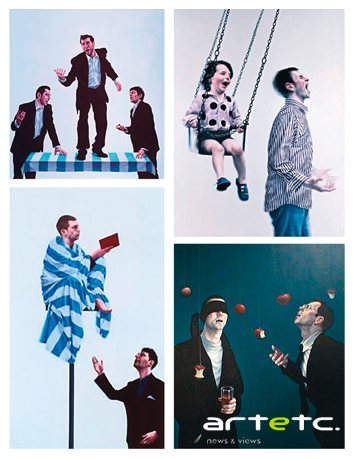- Publisher's Note
- Editorial
- The Enigma That was Souza
- Progressive Art Group Show: The Moderns
- The Souza Magic
- M.F. Husain: Other Identities
- From All, One; And From One, All
- Tyeb Mehta
- Akbar Padamsee: The Shastra of Art
- Sensuous Preoccupations of V.S. Gaitonde
- Manishi Dey: The Elusive Bohemian
- Krishen Khanna: The Fauvist Progressive
- Ram Kumar: Artistic Intensity of an Ascetic
- The Unspoken Histories and Fragment: Bal Chhabda
- P. A. G. and the Role of the Critics
- Group 1890: An Antidote for the Progressives?
- The Subversive Modernist: K.K.Hebbar
- Challenging Conventional Perceptions of African Art
- 40 Striking Indian Sculptures at Peabody Essex Museum
- Tibetan Narrative Paintings at Rubin Museum
- Two New Galleries for the Art of Asia opens at the Museum of Fine Arts in Boston
- Raphael, Botticelli and Titian at the National Gallery of Australia
- The Economics of Patronization
- And Then There Was Zhang and Qi
- What Happened and What's Forthcoming
- Random Strokes
- Yinka Shonibare: Lavishly Clothing the Somber History
- A Majestic “Africa”: El Anatsui's Wall Hangings
- The Idea of Art, Participation and Change in Pistoletto’s Work
- On Wings of Sculpted Fantasies
- The Odysseus Journey into Time in the Form of Art
- On Confirming the Aesthetic of Spectacle: Vidya Kamat at the Guild Mumbai
- Dhiraj Choudhury: Artist in Platinum Mode
- Emerging from the Womb of Consciousness
- Gary Hume - The Indifferent Owl at the White Cube, London
- Daum Nancy: A Brief History
- Experimenting with New Spatial Concepts – The Serpentine Gallery Pavilion Project
- A Rare Joie De Vivre!
- Art Events Kolkata-December 2011– January 2012
- Art Bengaluru
- Mumbai Art Sighting
- Delhi Dias
- Musings from Chennai
- Preview, February, 2012- March, 2012
- In the News-January 2012
ART news & views
Random Strokes
Issue No: 25 Month: 2 Year: 2012
Etc. Etc.
by Rumi Banerjee
The Outsider
Without death, life has no meaning…
 French painter, sculptor and film maker, that’s what Niki de Saint Phalle was. Her death in May 2002 meant the loss of a multi-talented artist. To choose art as a career was never easy for her. She had to cross many hurdles in her life to make things happen. She has been called an outsider artist, for she had no formal training. A symbolist and a surrealist with pop influence, her giant women are too powerful, too sexual and out of control. Her subjects are bold and she has trodden the path nobody dared to venture before her. For the mosaic lovers, her great legacy centers on the huge Cyclops in the Fontainbleu forest near Paris, and her stunning sculpture garden in Italy. The Tarot Garden (Giardino Dei Tarocchi) is an exploration of the human condition, in mosaic, on a monumental scale. These stark colour combinations of buildings and sculpture reflect the metaphysical qualities represented by the 22 main tarot cards (the major arcana). They're not concerned with the fortune-telling uses of the cards, but that of life's experience, personality and self-knowledge. The garden was officially opened to the public in May 1998. During construction, she lived in the sphinx-like Empress, a mirror-glassed cavern with kitchen, bedroom, and bathroom leading off. It was her dream to live inside a sculpture. With a tragic history of parental abuse, her work reflects her turbulent childhood and finally it seems that Saint Phalle ultimately created a corner for herself running away from the trauma of her childhood. Perhaps this sense of protection created dramatic size and colour of her sculptures that reflect the fortress of self and how she emerged from the ashes of her past like a phoenix.
French painter, sculptor and film maker, that’s what Niki de Saint Phalle was. Her death in May 2002 meant the loss of a multi-talented artist. To choose art as a career was never easy for her. She had to cross many hurdles in her life to make things happen. She has been called an outsider artist, for she had no formal training. A symbolist and a surrealist with pop influence, her giant women are too powerful, too sexual and out of control. Her subjects are bold and she has trodden the path nobody dared to venture before her. For the mosaic lovers, her great legacy centers on the huge Cyclops in the Fontainbleu forest near Paris, and her stunning sculpture garden in Italy. The Tarot Garden (Giardino Dei Tarocchi) is an exploration of the human condition, in mosaic, on a monumental scale. These stark colour combinations of buildings and sculpture reflect the metaphysical qualities represented by the 22 main tarot cards (the major arcana). They're not concerned with the fortune-telling uses of the cards, but that of life's experience, personality and self-knowledge. The garden was officially opened to the public in May 1998. During construction, she lived in the sphinx-like Empress, a mirror-glassed cavern with kitchen, bedroom, and bathroom leading off. It was her dream to live inside a sculpture. With a tragic history of parental abuse, her work reflects her turbulent childhood and finally it seems that Saint Phalle ultimately created a corner for herself running away from the trauma of her childhood. Perhaps this sense of protection created dramatic size and colour of her sculptures that reflect the fortress of self and how she emerged from the ashes of her past like a phoenix.
The Negative Freedom
A thousand evening of vague small talk, blank silences, yawning over the newspaper, retiring at bedtime.....
 Aneta Bartos is an amazing polish born but New York Central based fashion-turned-art-photographer. She migrated from her native Poland to Brooklyn. Bartos has used her early training to eye-opening ends, producing intimate, darkly romantic images of often nude, sometimes self-pleasuring waifs in startling positions. The lights seem to come down from some unknown mysterious source, as if a sinister darkness crawls under the layers of the human skin and arouses a sensation of thousand ants flowing through the blood vessels. An unknown desire, an aggression, a blue flame of forbidden joy, a thirst to open the wings and dart through the dark clouds getting drenched in the passion of black rain... haunts and mesmerises the viewer leaving an almost dizzy effect afterwards. Her photographs are perhaps an orgy... a festival of womanhood... discovering secret lands and exploring the strange, lonesome tunnels of thought... her nudes clasping together and steaming circled with vapours like the crimson clouds fume about the west. Her ‘Boys’ are indulged in drinking the perfume of sin... burning in the fire of hell and attaining a kind of ‘nirvana’ through physical gratification. What does it mean for a woman to assert her sexual longing and to objectify the male body? Bartos explored the range of possibilities that can be articulated when the female perspective of sex and desire is finally granted an active seat. Women must judge and be critical, she cannot remain a mere docile echo. Bartos wants to escape from the sphere assigned to women by the society. Finally, the system doesn’t need to accommodate woman, women need to institute a new system.
Aneta Bartos is an amazing polish born but New York Central based fashion-turned-art-photographer. She migrated from her native Poland to Brooklyn. Bartos has used her early training to eye-opening ends, producing intimate, darkly romantic images of often nude, sometimes self-pleasuring waifs in startling positions. The lights seem to come down from some unknown mysterious source, as if a sinister darkness crawls under the layers of the human skin and arouses a sensation of thousand ants flowing through the blood vessels. An unknown desire, an aggression, a blue flame of forbidden joy, a thirst to open the wings and dart through the dark clouds getting drenched in the passion of black rain... haunts and mesmerises the viewer leaving an almost dizzy effect afterwards. Her photographs are perhaps an orgy... a festival of womanhood... discovering secret lands and exploring the strange, lonesome tunnels of thought... her nudes clasping together and steaming circled with vapours like the crimson clouds fume about the west. Her ‘Boys’ are indulged in drinking the perfume of sin... burning in the fire of hell and attaining a kind of ‘nirvana’ through physical gratification. What does it mean for a woman to assert her sexual longing and to objectify the male body? Bartos explored the range of possibilities that can be articulated when the female perspective of sex and desire is finally granted an active seat. Women must judge and be critical, she cannot remain a mere docile echo. Bartos wants to escape from the sphere assigned to women by the society. Finally, the system doesn’t need to accommodate woman, women need to institute a new system.
Psychic Void
I travelled among unknown men
In lands beyond the sea.... - Wordsworth
 His work divulges his yearning to detain the viewer’s concentration while stamping his unique mark on the subject. One thing is common in all the works of the 1960 born French artist Bruno Catalano- a void....that leaves the viewers surprised as they try to imagine the ‘missing pieces’ that makes a whole. During 1990 he started his journey as an extraordinary sculptor. His brilliance lies in the ability to endow the innately obscure material with a transcendental essence. He is a romantic visionary, and his subject matter has constantly been shaped in the preposterous structure of a superlative world where love, peace, beauty and harmony reign. Interestingly the universal theme of travel inspires him. Since he started to knead clay, some hundred or so travelers have come out of his feverish hands, populating his studio while awaiting an unknown destination. His former sets of works, dense and conventional, are tied to the elements of the earth, whereas the series that follows does not cease to obtain expressiveness and finesse. These astonishing works, with their ruined bodies and the pre-determined lack of volume, invite the viewer to psychologically reconstitute its limits. Thus, Van Gogh still leaves with his suitcase in hand, towards the Provencal countryside, but it is in quasi-abstract buoyancy, open to the elements. Through his statuary, he re-enacts the adventure of the human species, between two riverbanks.
His work divulges his yearning to detain the viewer’s concentration while stamping his unique mark on the subject. One thing is common in all the works of the 1960 born French artist Bruno Catalano- a void....that leaves the viewers surprised as they try to imagine the ‘missing pieces’ that makes a whole. During 1990 he started his journey as an extraordinary sculptor. His brilliance lies in the ability to endow the innately obscure material with a transcendental essence. He is a romantic visionary, and his subject matter has constantly been shaped in the preposterous structure of a superlative world where love, peace, beauty and harmony reign. Interestingly the universal theme of travel inspires him. Since he started to knead clay, some hundred or so travelers have come out of his feverish hands, populating his studio while awaiting an unknown destination. His former sets of works, dense and conventional, are tied to the elements of the earth, whereas the series that follows does not cease to obtain expressiveness and finesse. These astonishing works, with their ruined bodies and the pre-determined lack of volume, invite the viewer to psychologically reconstitute its limits. Thus, Van Gogh still leaves with his suitcase in hand, towards the Provencal countryside, but it is in quasi-abstract buoyancy, open to the elements. Through his statuary, he re-enacts the adventure of the human species, between two riverbanks.
Iconographic Utterances
It is scribbled along the body
Impossible even to say a word....
 His subjects are sprinkled with satires. His images are metaphoric, powerful and expressive. Like a dream, his works are an emblematic arrangement of veils articulated by the unconscious. One has to translate the iconographic utterances into words. He plays with the anxiety of the frozen moment and what might come next. He explores bizarre colour synchronization, the constraints of personal expression and masculine conventions to create slightly unsettling scenarios. Graeme Wilcox attended Glasgow School of Arts and graduated in Fine Arts around 1993. Since then he has continued to work as a painter in his Glasgow Studio. The Medici Gallery has exhibited Graeme’s painting for the past six years and during this time, he has become one of the Gallery’s leading figurative painters. His work is technically traditional, has a powerful contemporary feel depicting underlying tensions between animation and stillness. He applies a unique ‘freeze frame’ technique. He is able to portray the transient, blurred image of one moving figure and at the same time, engage in precise photographic representation of another. All his paintings are oil on canvas, a break from acrylics. This change of medium has added a new depth and richness to his work. Captivating, recurring and sometimes inexplicable. His paintings of jugglers, hypnotists and suited men are like stills from an unknown film. The moral of the story is open to interpretation.
His subjects are sprinkled with satires. His images are metaphoric, powerful and expressive. Like a dream, his works are an emblematic arrangement of veils articulated by the unconscious. One has to translate the iconographic utterances into words. He plays with the anxiety of the frozen moment and what might come next. He explores bizarre colour synchronization, the constraints of personal expression and masculine conventions to create slightly unsettling scenarios. Graeme Wilcox attended Glasgow School of Arts and graduated in Fine Arts around 1993. Since then he has continued to work as a painter in his Glasgow Studio. The Medici Gallery has exhibited Graeme’s painting for the past six years and during this time, he has become one of the Gallery’s leading figurative painters. His work is technically traditional, has a powerful contemporary feel depicting underlying tensions between animation and stillness. He applies a unique ‘freeze frame’ technique. He is able to portray the transient, blurred image of one moving figure and at the same time, engage in precise photographic representation of another. All his paintings are oil on canvas, a break from acrylics. This change of medium has added a new depth and richness to his work. Captivating, recurring and sometimes inexplicable. His paintings of jugglers, hypnotists and suited men are like stills from an unknown film. The moral of the story is open to interpretation.